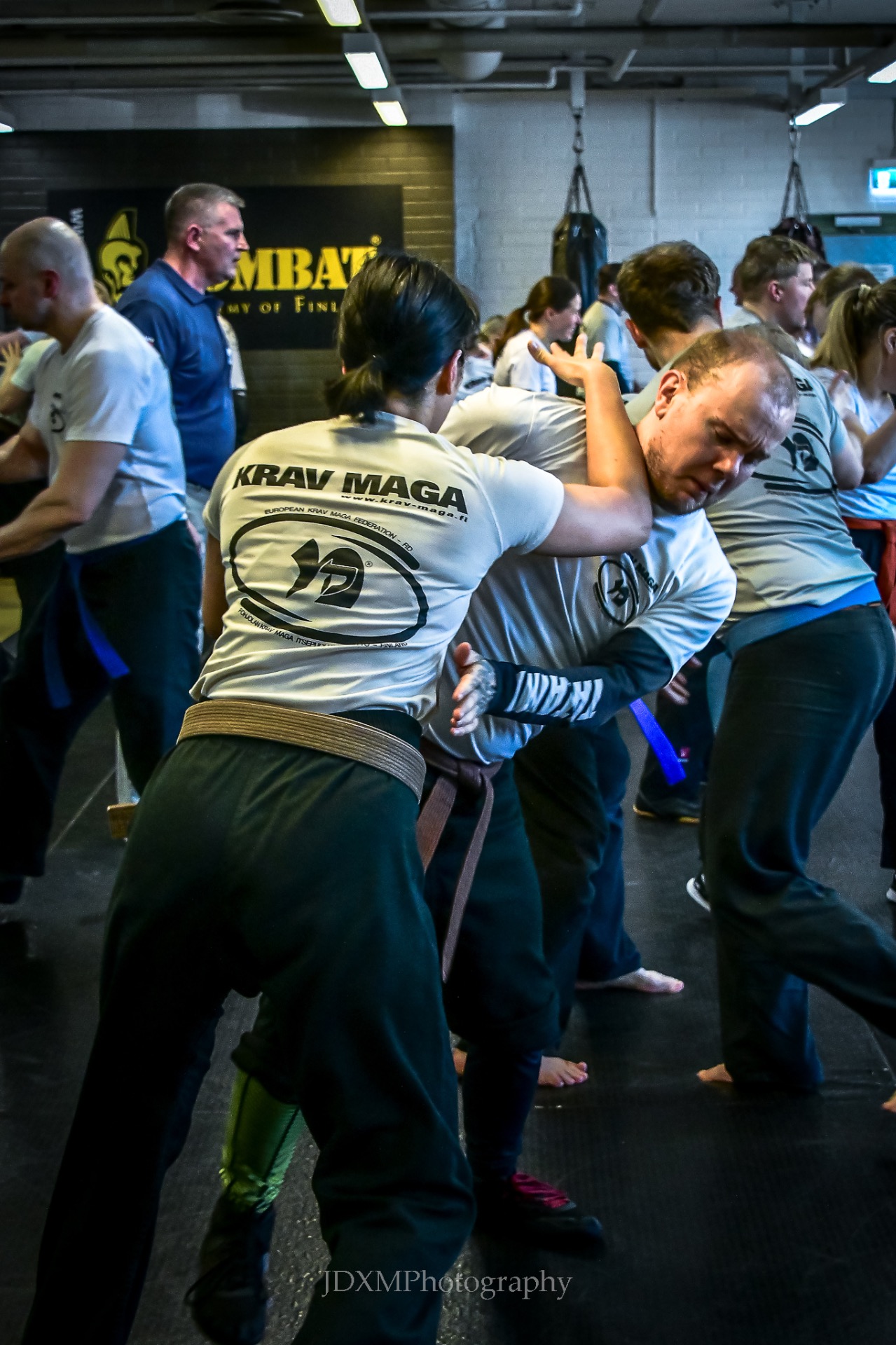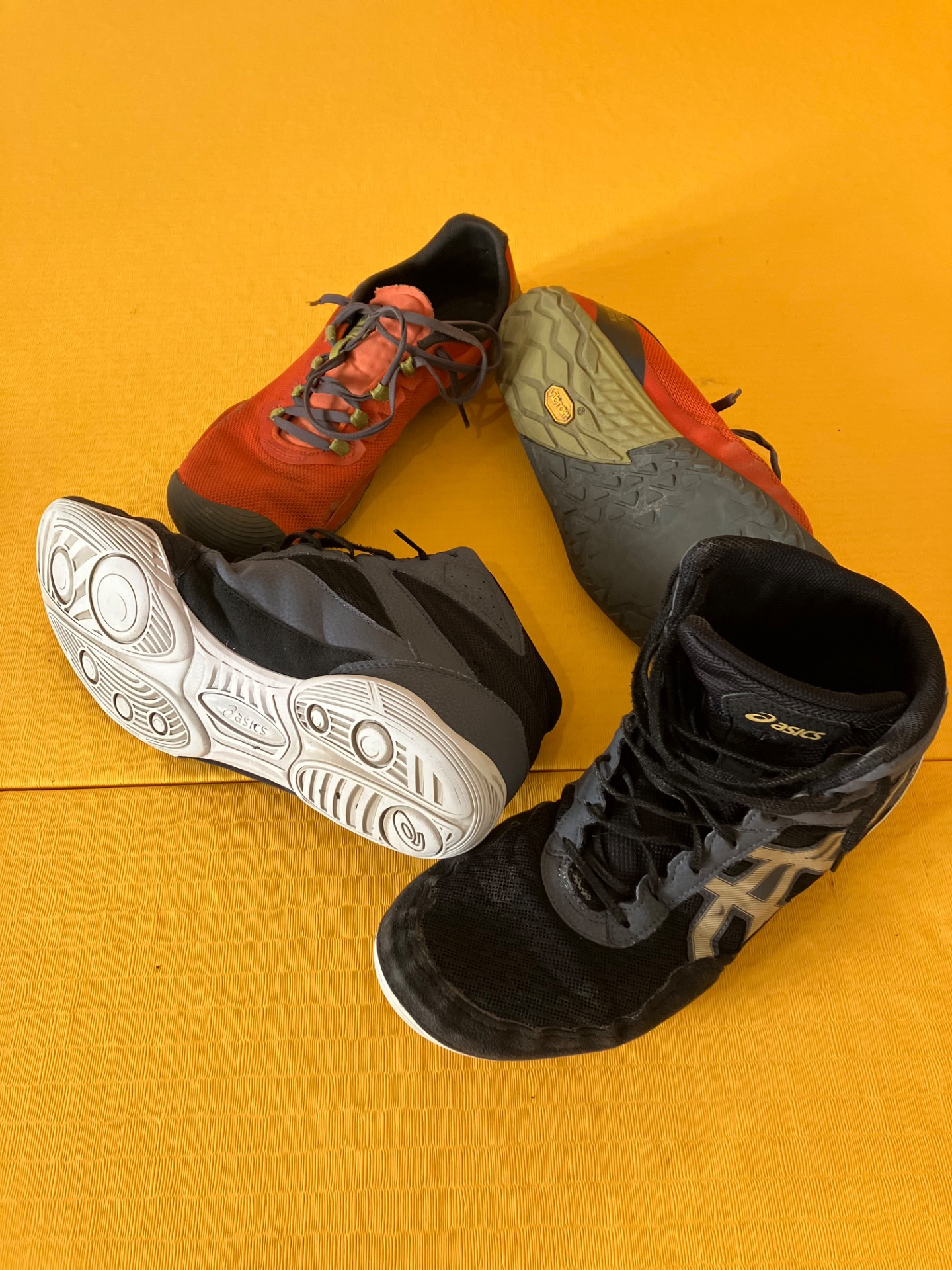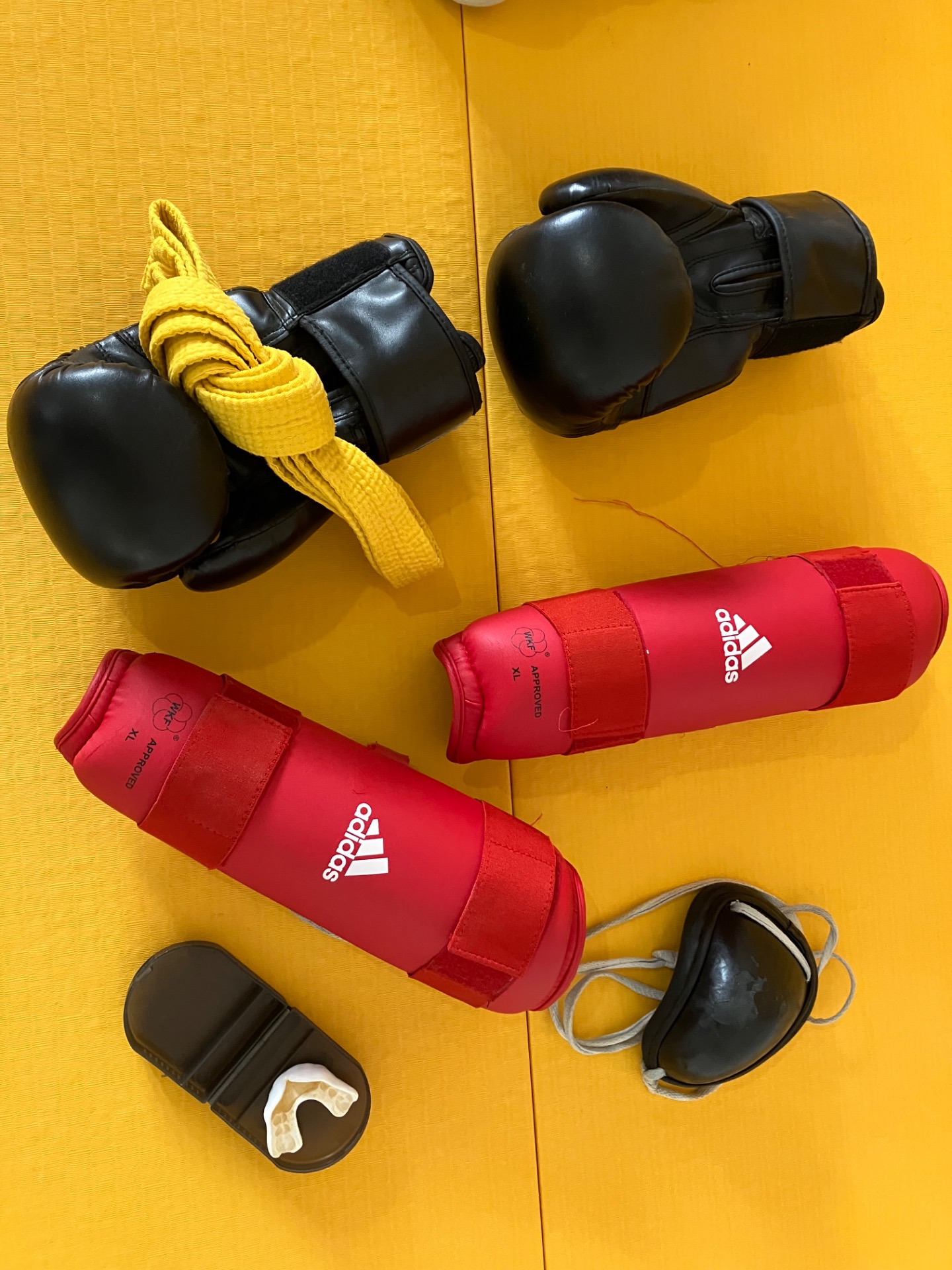Training
Basic Krav Maga self-defence course
In the basic course you will learn the basic techniques of Krav Maga and after completing the course you will be ready to continue with the hobby. Through practice you will improve your fitness, increase your confidence and learn useful self-defence skills. The basic course is suitable for people of all ages and abilities (minimum 18 years) and you do not need any previous martial arts experience. Participants must have no criminal background.

Photo by Jari Mäenpää/JDXMPhotography
What do I need for training?

No protection or equipment is required for the basic course. Normal indoor exercise clothing is fine. For footwear, soft indoor shoes such as wrestling shoes or barefoot running shoes (not running shoes or indoor shoes with hard edges) are suitable. It is also possible to train barefoot or with (clean) socks. Training takes place on the tatami. Remember to bring a water bottle.
Follow-up group
After completing the basic course, you will move on to the advanced group. In the advanced group Krav Maga training you will wear the white official training shirt and black budo pants and the belt (starting from yellow).
At this stage, you should also wear groin guards, mouthguards, shin guards, and boxing gloves.

As a trainee, you will also have the opportunity to participate in domestic (PKMI) or international (FEKM) Krav Maga camps.
Read more about the camps.
About training safety
The goal is for everyone to have fun during training. To ensure this, we follow the safety rules of the Nordic Krav Maga Self-Defence Association (PKMI) during training:
Come to practice on time. Latecomers must report to the instructor upon arrival.
It is strictly forbidden to train while sick, under the influence of drugs, intoxicated or hungover.
It is strictly forbidden to bring gas guns, gas sprayers, bladed or firearms (or ammo), sharp objects, glass bottles, etc. to the training sessions.
Keys, jewellery, watches and rings must be removed before entering the exercise. Take care of personal hygiene and wear clean workout clothes. Keep nails short so as not to hurt yourself or your partner. All cuts and abrasions should be well taped before practice. If wounds occur during practice or old bruises open up, blood stains should be cleaned up immediately.
No leaving practice without permission of the instructor. If you have to leave in the middle of a practice, please let the teacher know before class.
All students are equal, only the teacher can give advice in case of problems.
Only the teacher's instructions are given during the exercises. Concentrate on the lesson and follow the instructions given quickly and accurately.
Do not talk unnecessarily during the exercises or while watching others.
Always behave respectfully towards fellow students and teachers.
If injured during practice, report it to the teacher immediately.
Adequate protection must be worn during contact exercises.
Everyone has the right and the duty to stop the exercise if they observe a hazard or anomaly that could cause an accident and to report it immediately to the teacher.
No eating (even chewing gum) during the exercise, drink and rest breaks will be taken simultaneously.
Deliberately injuring training partners is prohibited.
Progress in the sport
You may continue training even without aiming for belt ranks. All belt level techniques are practiced in training. While there's no competition in Krav Maga, the belt system can help maintain motivation and skill development.
Progression starts with the basic course, after which you advance through belt levels:
- Yellow and Orange belts focus on strong fundamentals (movement, balance, blocks, strikes, and kicks).
- Green belt: faster tempo, escape techniques on feet and ground, and multiple counterattacks.
- Blue belt: emphasis on defense against knives, blunt weapons, throws, and sweeps.
- Brown belt: introduces firearm threat techniques, ground defense (sitting/lying), jump kicks, and kick combinations.
- Black belt 1st dan: full mastery of all techniques at full speed in unknown attack scenarios.
Read more about national grading requirements (PKMI), (up to brown belt).
Read more about international grading requirements (FEKM), (for black belt and beyond).